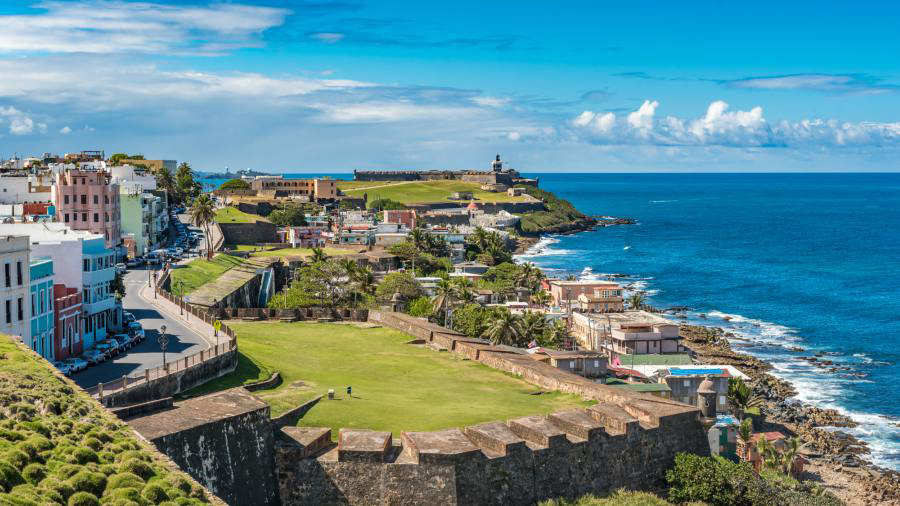
Workers report being paid $ 7.25 per hour, when in their country they earned less than that per day.
With crops in danger of losing for lack of labor, some farmers imported Mexican workers to Puerto Rico, an American island with rampant unemployment but where receiving pandemic bonds is more profitable than working the field.
In the González Property, in the municipality of Guánica to the southwest of this Caribbean island, a group of Mexicans works in the packing machine; another washes the bananas and a third ties the tomato bushes to the stakes.
“That’s great. For those of us who are used to this, it’s perfect,” says 22-year-old Abigain Sebastian, without looking up from the fast-tying tomatoes.
SEE: For every gallon of fuel you pay up to $ 0.84 only in taxes
“In Mexico the most I could be doing is seven dollars a day’s work.”
In Puerto Rico, on the other hand, Sebastian receives $ 7.25 an hour, which is the US federal minimum wage.
“This money is a very stable help,” the young man says. Wear long sleeves and a hat to protect yourself from the tropical sun.
For Puerto Ricans, on the other hand, $ 7.25 an hour is not enough, despite an unemployment rate of 9.2%.
Except when, as a result of the pandemic, the unemployed in this unincorporated territory of the United States receive – as in the rest of the country – a weekly bonus of $ 300 in addition to unemployment benefits.
This is the case of Juan Santiago, who lives near the Finca González although he prefers not to say where he worked. He lost his job in February and with it his $ 290 weekly salary.
He now receives $ 540 a week – 240 for unemployment benefits and $ 300 as part of the historic bailout plan signed by President Joe Biden on March 11th.
“I feel better than when I worked,” Santiago told AFP. “I wouldn’t earn that on the farm. It’s low pay for farm employees. The bad thing is the sun too.”
Like Puerto Rico, a handful of the country’s 50 states, such as Texas and Pennsylvania, cling to the 7.25 federal minimum wage. The rest mostly impose minimum wages around $ 10, according to the U.S. Department of Labor.
YOU MAY BE INTERESTED IN: Costa Rica will begin the first phase of gradual opening of land borders this Monday
Sebastian arrived from Mexico to Puerto Rico last week as part of a first group of 21 Chiapas workers brought in with the H-2A visa program for temporary agricultural workers. Seventeen of them went to the Finca González.
“With that I also help my old lady who is a single mother. I have a 14-year-old sister,” says the day laborer.
“Logically so”
Economist José J. Villamil indicates that the labor market in Puerto Rico “is dysfunctional.”
Part of the problem, he says, is that Puerto Rico is a regional economy in the United States.
“As there is a large wage gap between the island and other states, it is relatively easy for a Puerto Rican worker to go to the United States and benefit from a higher salary,” he wrote. in a column Monday in the local newspaper El Nou Dia.
Another factor in “dysfunction” is the pandemic bonds, he says.
“Obviously, the appeal of working for $ 7.25 is lost and it makes sense that this is the case,” the expert writes.
Héctor Cordero, president of the Association of Farmers of Puerto Rico, commented last week on NotiUno 630AM radio that 1,000-1,500 laborers are needed on the island and that the arrival of a group of farmers is being processed. ‘Hondurans.
Carlos Gonzalez, the owner of the 375-acre estate that bears his name, accuses his compatriots of “losing their work culture.”
However, he acknowledges that federal aid is not the only one responsible for the flight of workers.
Puerto Rico has been hit in recent years by two Category four hurricanes and a series of earthquakes that have exacerbated the financial crisis that has dragged the island for more than a decade.
And then, “with the pandemic, I don’t even tell you,” González adds.
As a result of this perpetual state of crisis, the population of 3.1 million decreased 14.3% compared to 2010, according to the US Census.
“Everything kept adding up and we got to a point where we couldn’t get labor,” explains González, who grows vegetables like bananas, tomatoes, onions and pumpkin.
But “this situation is not of now,” he adds. “It’s a historical thing and it comes from our colonial situation.”